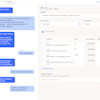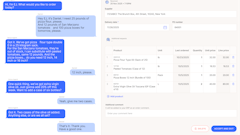
ClimateAi launched FICE (Foundational Intelligence for Climate & Economy), a new foundational model that provides a precise view of how extreme weather influences consumer behavior, revenue patterns and economic impacts. The model can be used by businesses looking to understand how they perform during climate events, investors assessing the resilience of portfolio companies, insurers looking to price risk more accurately, or governments assessing where to target disaster aid.
“This is game-changing research. For the first time, we’ve quantified the opportunity in climate adaptation—not just the cost. FICE shows how weather impacts economic performance in measurable ways, turning climate volatility into a source of strategic insight. Businesses now have the data to reduce losses—and lead with resilience,” says Himanshu Gupta, CEO of ClimateAi.
“What’s powerful about FICE is that it’s not limited to any one industry. Whether you’re a supplier planning demand, a grocer preparing for storms, or an insurer pricing regional risk, FICE looks back at how businesses have responded to past weather events and turns that insight into forward-looking intelligence—helping leaders across industries make smarter, faster decisions,” adds Will Kletter, COO of ClimateAi.
“FICE insights isolate the impact of weather on a wide variety of economic outcomes in an interpretable manner. This product uses an adaptation of tree-based models and provides a clear window into how climate drives economic outcomes; it’s a transparent tool to drive adaptive action rather than a black box,” says Dave Farnham, senior director of data science at ClimateAi.
Key takeaways:
· By combining aggregate consumer transaction data and other macroeconomic indicators with ClimateAi’s hyper-local and granular weather risk modeling in an AI framework, FICE explicitly models the direct impact to economic activity, measured by sales data, of weather conditions. Users can finely tailor insights to specific geographies and segment by industry to access high-value use cases and strategic intelligence. The result is end-to-end value for supply and demand planning.
· FICE is built for explainability—clearly showing how much of a given outcome is driven by weather vs. other factors.
· FICE is an AI-supercharged Waffle House Index, named after the American diner whose open/closed status is used by FEMA to evaluate disaster impacts, allowing companies to benchmark their own financial performance to show how they can improve. Insights into consumer behaviorcan be segmented on a sector-by-sector, store-by-store, and day-by-day basis.
· FICE will centralize sales and weather data on one platform.
· FICE’s longitudinal analysis reveals that extreme weather doesn’t just disrupt, it drives demand. Across a ten-year period, the grocery sector alone saw over 3,000 days of weather-driven.
· Public bodies will also gain from minimizing shortfalls in tax revenue linked to disaster-related economic slowdowns. Federal and local institutions can plan ahead to target disaster aid, funds, and recovery efforts to the most impacted sectors and regions.




















